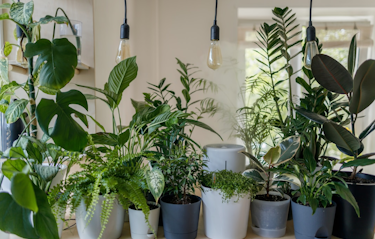
How To Trim Pothos
- Easy Care
- Araceae
- Large
- Evergreen Tropical Vines
We independently select everything we recommend. When you buy through our links, we may earn a commission.
In order to enjoy the lovely flowers of a bird of paradise (strelitzia reginae), there are specific care requirements. To get the plant to bloom it needs to be the right age, and also receive the proper amount of sunlight, water, and food.
Published on 21 August, 2023 by Oliver Rouane-Williams
The bird of paradise, also called the crane flower, is a beautiful plant that thrives in warm, sunny climates. There are a few different kinds, including the giant bird of paradise and the white bird of paradise, and they all have the trademark beautiful flowers—when they bloom.
The most common reason a bird of paradise plant won’t bloom is lack of light.
These are tropical flowers that require 4-6 hours of full sun (not indirect light, like most houseplants). Most homes simply don’t have sufficient light sources for birds of paradise to bloom indoors.
The bottom line is that if you’re growing birds of paradise as indoor plants, they are unlikely to bloom.

Bird of paradise flowers will only appear on mature plants. Under optimal growing conditions, it takes anywhere from three to five years to produce blooms.
It’s also important to note that if the roots are disturbed, such as through repotting, the plant is unlikely to bloom for another two to three years.
This beautiful tropical plant will generally flower from late fall to early spring. Once the bird of paradise has produced flowers, the blooms typically last about three weeks.
With the perfect conditions, a bird of paradise could flower year-round since a well-cared-for, healthy, and mature plant can produce up to 36 flower spikes yearly.

If your bird of paradise isn’t blooming, make sure you’re providing optimal growing conditions:
Age: Wait until your plant is at least 3-4 years old before worrying about blooms. Only mature plants bloom.
Food: Regular houseplant fertilizer doesn’t work for birds of paradise. A 10-30-10 fertilizer high in phosphorus is best for a bird of paradise plant when you’re trying to encourage blooming. They are heavy feeders, so apply a liquid fertilizer once per month during the growing season.
Roots: Birds of paradise only bloom once the root system is established and mature. The rootball also prefers to be fairly tight in the pot (root bound).
Sun: This plant needs a minimum of four hours of bright light from direct sunlight before it will bloom, but it thrives in 6-8 hours of full sun. This can be challenging in the winter months. When indoors, choose an east to a west-facing window so it can soak up as much warm afternoon sun as possible.
Temperature: These tropical plants like it on the warmer side. They’ll tolerate temperatures as low as 65, but they prefer to be closer to 80, like their native climate of South Africa and regions where they’re cultivated year-round, like Florida.
Water: Overwatering can cause root rot and stress the plant to prevent it from blooming. Birds of paradise are drought-tolerant, so wait for the soil to be dry about halfway down into the pot before you water it. In general, a bird of paradise only needs watering every 1-2 weeks.
Soil: This plant prefers well-draining soil. A potting mix of half potting soil and half peat moss is a great choice for the bird of paradise. They like to be a bit root bound (also called pot-bound) so choose a small container that only has about a one-inch space between the roots and the pot. As mentioned prior, repotting this plant can stop it from blooming, so do not be in a rush to do so.
Delivered to your inbox every Saturday morning








